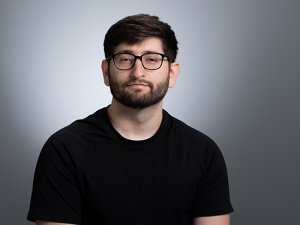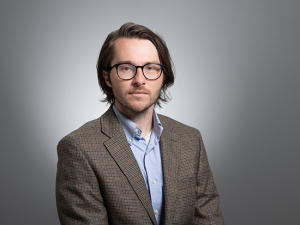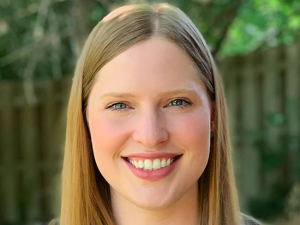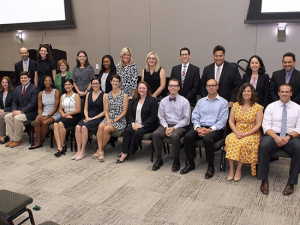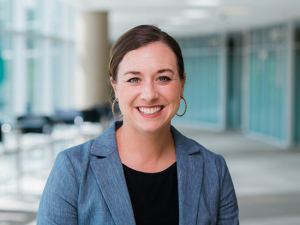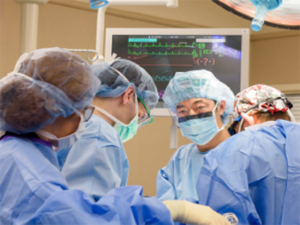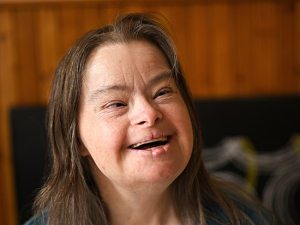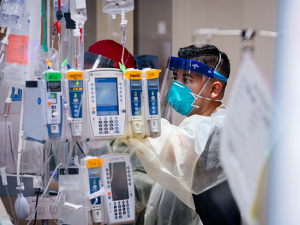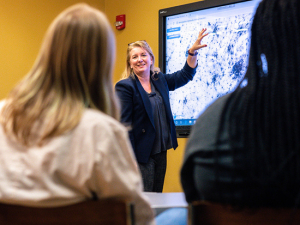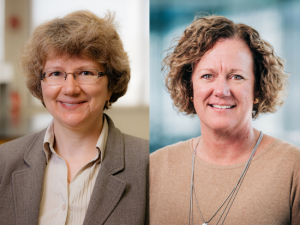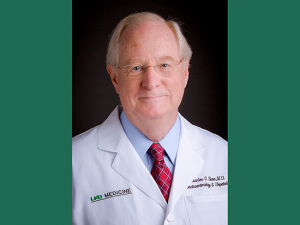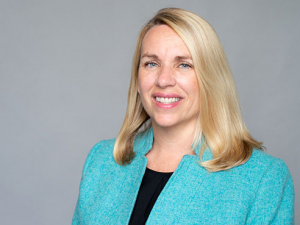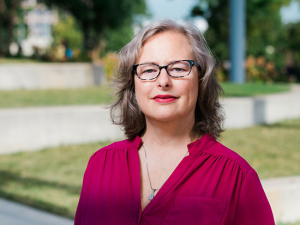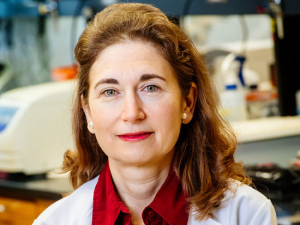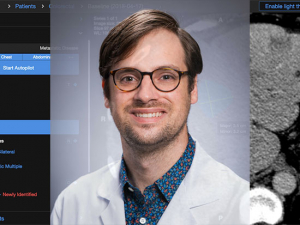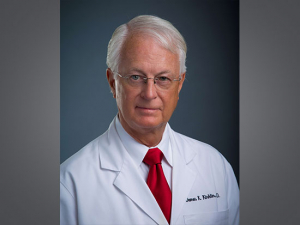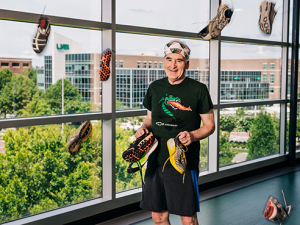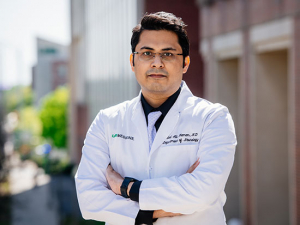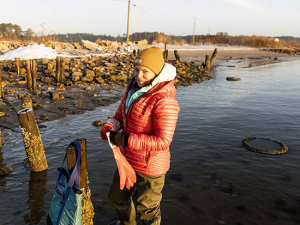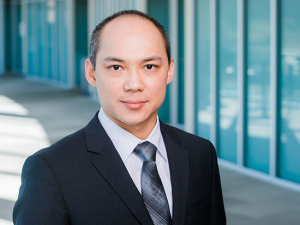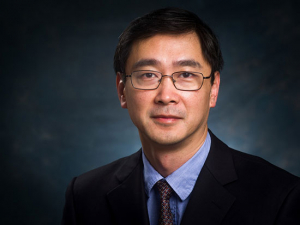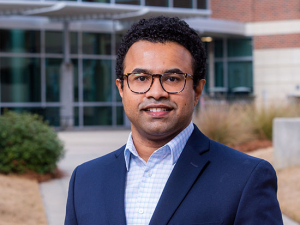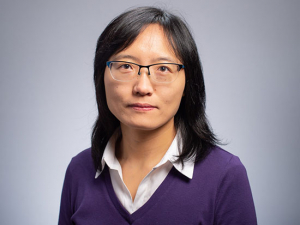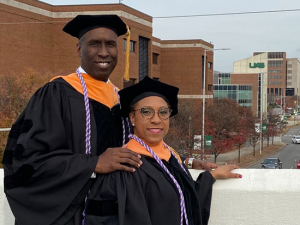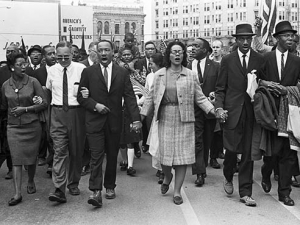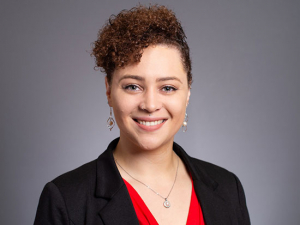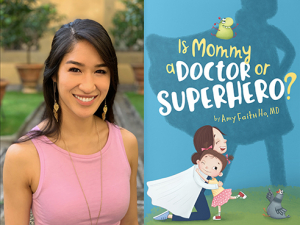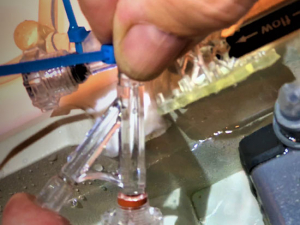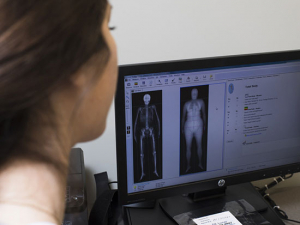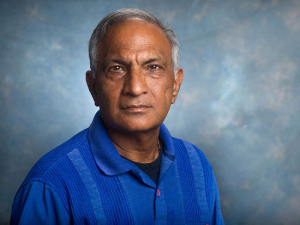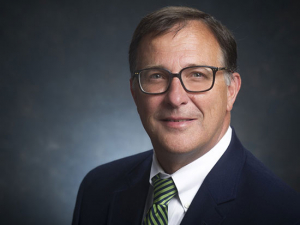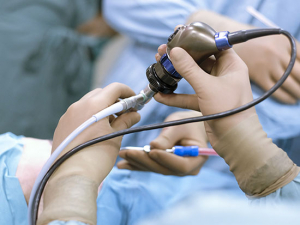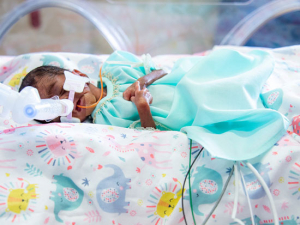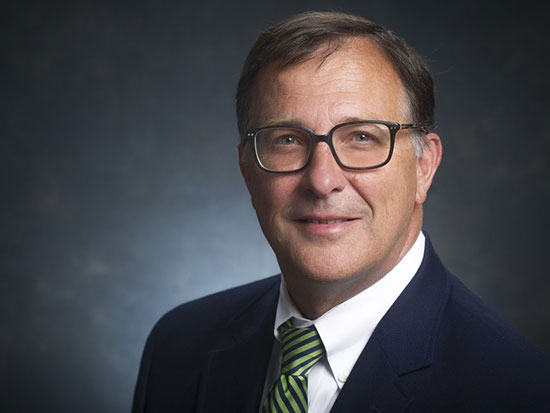 A ruptured disc set in motion a distinguished career in research for Samuel Cartner, DVM, Ph.D. Cartner, associate vice president for research facilities and infrastructure and director of the Animal Resources Program, will retire from UAB Oct. 1 after more than 25 years.
A ruptured disc set in motion a distinguished career in research for Samuel Cartner, DVM, Ph.D. Cartner, associate vice president for research facilities and infrastructure and director of the Animal Resources Program, will retire from UAB Oct. 1 after more than 25 years.
The Animal Resources Program is a central part of the UAB Office of Research, supporting more than 400 investigators with combined annual research funding of more than $150 million. The program's 130 veterinarians, scientists and technicians care for more than 150,000 animals, including more than 20 species. “Medical knowledge and treatments, and certainly most recent medical breakthroughs, including treatments for COVID-19, has involved research with animals,” said Christopher Brown, Ph.D., vice president for Research. “Dr. Cartner is the quintessential Blazer, working across departments and schools to advance research while maintaining the highest standards for animal welfare and the best qualities of the veterinary profession. UAB will greatly miss his expertise, decisiveness and collaborative spirit, but after his long years of service he richly deserves a great retirement.”
“Dr. Cartner has been invaluable in helping us pursue grants and design animal studies, and for caring for these animals in both a humane and scientifically valuable manner,” said Selwyn Vickers, M.D., senior vice president and dean of the School of Medicine. “He has had a tremendous impact on the science community at UAB and across the world.”
Cartner is quick to state that he is leaving the program with very capable and experienced leadership. Erik Dohm, DVM, associate director for the ARP, will be the interim leader while a national search is launched to identify Cartner’s replacement.
“Dr. Cartner is the quintessential Blazer, working across departments and schools to advance research while maintaining the highest standards for animal welfare and the best qualities of the veterinary profession.”
Disc to discovery
"I love science, but it wasn't my first intention to do research," Cartner said. He had grown up in the mountains of North Carolina on a small beef cow farm. "I was always enamored with the veterinarians who came out to work on our animals, and I decided to pursue it as a career," Cartner said of his inspiration to work with animals. Fresh out of veterinary school at Auburn University College of Veterinary Medicine in the mid-1980s, Cartner and his wife, Agnes — also a veterinarian — had moved to southern Virginia, where "I did all dairy and beef cattle and absolutely loved it," Cartner recalled. After a ruptured disc and two back surgeries, however, Cartner and Agnes moved from Virginia to southern Alabama, where he took a job with the Mobile County Health Department, which included overseeing dairy and milk-processing plants. Cartner also enrolled in UAB's master of public health program and was enthralled. (He graduated from the program in 1988.) So "my wife and I decided to come back to school," Cartner said.
Agnes enrolled in the School of Medicine, graduating in 1995 and specializing in radiology. She recently retired after two decades at Radiology Associates of Birmingham. Cartner earned his doctorate in cellular and molecular pathology the same year, studying under Russell Lindsey, DVM, a national leader in the discovery and investigation of animal models of human diseases. "Russell Lindsey really opened my eyes to biomedical research and what was going on at UAB," Cartner said. "Luckily, I've been able to stay ever since, doing some of my own research and helping improve the facilities and the animal program — I can't imagine a better place than UAB for my career."
Colleagues say the institution has benefited tremendously from Cartner's leadership and forward thinking. "He is an institutional treasure," said Pam Bounelis, Ph.D., who retired in 2019 after more than three decades at UAB, where she held several senior research leadership roles. "I cannot tell you how many times I have heard from faculty we were recruiting, 'Your animal director is wonderful — he's your secret weapon,'" Bounelis said. “At heart, Sam is a scientist. You can talk to him about any scientific problem. The problem percolates in his brain and he pours out an idea to address the problem that is spectacular. He is always thinking about how to improve the world to move science forward.”
"Russell Lindsey really opened my eyes to biomedical research and what was going on at UAB. Luckily, I've been able to stay ever since, doing some of my own research and helping improve the facilities and the animal program — I can't imagine a better place than UAB for my career."
'Best in the country'
"I think Sam Cartner is the best Animal Resources Program director in the country," said Tim Townes, Ph.D., professor emeritus and past chair of the Department of Biochemistry and Molecular Genetics. "The enormity of the job at a major medical center like UAB is something that not many people can understand — how time-consuming it is, how tirelessly you have to work and how you have to manage expectations of faculty members.”
That is because “everyone thinks their science is the most important science on earth,” Townes said. “Those are the kinds of people you want in your labs, of course, and Sam always handles those expectations so well. He is a problem-solver. I always felt like he was working with us as a part of our team to solve important problems. He just has a real respect for individuals — that's true for his staff, and faculty members and the animals themselves."
Townes developed the first practical animal model of sickle cell disease with UAB colleague Thomas Ryan, Ph.D., in 1997. Cartner and his staff in the Animal Resources Program "were very important contributors to the successful production of that mouse model and then they helped us distribute those animals to other researchers," Townes said. "Every research group working on sickle cell in the world has used those models, I think, and Sam and his group were instrumental in helping us make them and distribute them. Many novel drug therapies and gene therapies for sickle cell have been developed in those models and are now being translated to human patients in clinical trials. And they came from UAB."
"Sam listens carefully," Bounelis said. "He hears the train coming before he sees it on the tracks. He pays attention."
In 2017, Cartner received a Dean's Excellence Award in Service from the School of Medicine, with colleagues praising "his exceptional ability to anticipate faculty needs in the use of unique research models."
Cartner has also served in leadership roles for the American Veterinary Medical Association (AVMA), serving as chair of the AVMA Panel on Animal Euthanasia and leading the laboratory animal subcommittee on Animal Depopulation. Cartner’s contributions to biomedical research were recognized in 2019 by the Auburn College of Veterinary Medicine, which awarded him its Wilford S. Bailey Distinguished Alumni Award.
"He is an institutional treasure. I cannot tell you how many times I have heard from faculty we were recruiting, 'Your animal director is wonderful — he's your secret weapon.'"
Genetics, imaging, aquatics — how things have changed in 25 years
The greatest change that Cartner has seen during his UAB career "was the development of technology to genetically modify animals, starting out primarily with mice," he said. "UAB was starting its transgenic animal facility at the time, which has resulted in exponential growth in animal research."
Imaging technology also has changed dramatically, Cartner said. "When I first started it was X-rays or ultrasound in research animals — now we have rodent MRI, PET/CT and other imaging modalities.”
Another major change in the past 25 years is the use of aquatics in biomedical research, Cartner said — particularly zebrafish. Zebrafish are inch-and-a-half-long relatives of the minnow that are natives of southern Asia. Crucially, they have similar physiology to humans, have a fully sequenced genome that has significant overlap with the human genome, grow from embryo to full development within a few weeks and can lay up to 200 eggs per week. "Zebrafish are now the second most-used animal model in biomedical research, and we are a leader in the zebrafish research world," Cartner said.
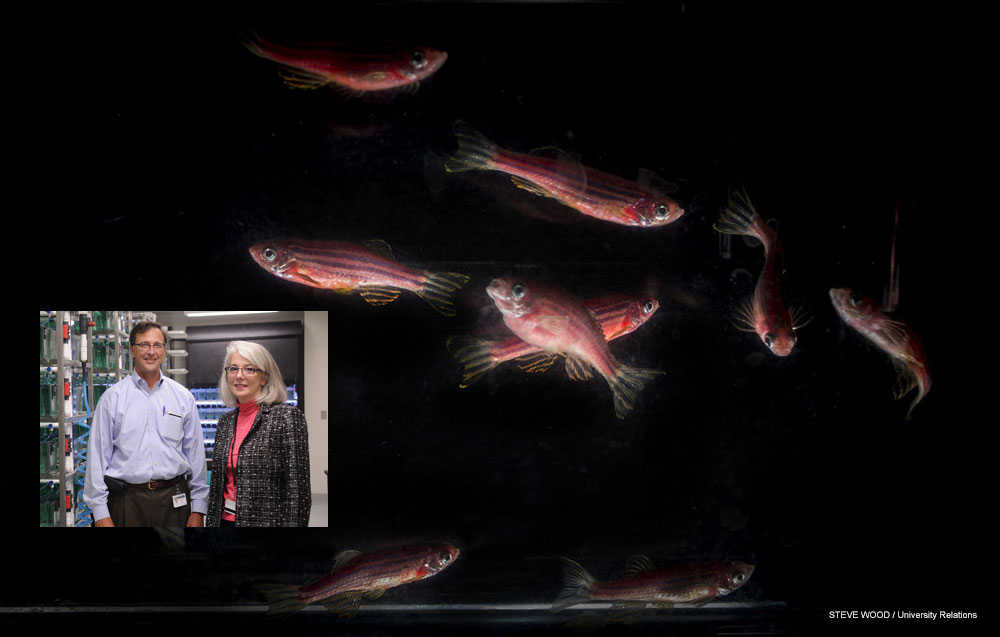 Cartner and Mary-Ann Bjornsti, Ph.D. (inset above, in 2011), along with Steve Watts, Ph.D., initiated the efforts that led to UAB's current, world-class zebrafish research program.
Cartner and Mary-Ann Bjornsti, Ph.D. (inset above, in 2011), along with Steve Watts, Ph.D., initiated the efforts that led to UAB's current, world-class zebrafish research program.
That leadership role began with discussions between Cartner, Mary-Ann Bjornsti, Ph.D., chair of the Department of Pharmacology and Toxicology and Steve Watts, Ph.D., professor in the Department of Biology. Watts has long recognized zebrafish as an excellent biomedical animal model and Bjornsti was interested in recruiting new faculty who specialized in using zebrafish. "But we didn't have the resources," Cartner said. Nevertheless, Cartner could see that zebrafish had a big future in research. He went to Richard Marchase, Ph.D., then vice president for Research, and made his pitch. "Dick said, 'I'll match what you can raise,' and six departments chipped in money," Cartner recalled. "We jumped out there and wrote an internal Health Services Foundation/General Endowment Fund grant, were funded, and developed an external grant application from that. We had great backing from administration and received several grants to establish our zebrafish facility," he said. Susan Farmer, DVM, Ph.D., was recruited to co-direct the facility with Watts.
Soon, multiple investigators were using the facility in their research, and it has become a key recruitment tool to attract new talent to Birmingham. Cartner and Farmer partnered with leaders in the zebrafish world and developed an online eLearning class and a hands-on workshop on zebrafish husbandry, which has trained more than 500 people around the world in the past five years.
In November 2019, Cartner and Farmer, along with other zebrafish experts, including Judith Eisen and Karen Guillermin of the University of Oregon, Michael Kent of Oregon State University and George Sanders of the University of Washington edited The Zebrafish in Biomedical Research, a 500-page, standard-setting textbook. "If zebrafish are mentioned anywhere in the world, UAB is one of the places that comes to mind," Cartner said. "We get a lot of inquiries from people wanting to come to our programs. I'm proud of that."
Cartner’s work has positioned UAB to continue to lead the way in biomedical research, Brown said. The zebrafish facility, for instance, allows UAB to compete with the best in “one of the hottest areas around,” Brown said. “Whether it is neurological disease research, behavioral research, development — it is amazing what you can learn from these fish.”
“He is a problem-solver. I always felt like he was working with us as a part of our team to solve important problems. He just has a real respect for individuals — that's true for his staff, and faculty members and the animals themselves."
‘It was fun’
"The zebrafish facility was just one of many instances when Cartner combined grant-writing and research collaboration to move the institution forward," Bounelis said. Cartner was instrumental in adding new research facilities on campus and renovating older facilities. These include the Research Support Building, which opened in 2005, the Southeast Biosafety Laboratory Alabama Birmingham Building (SEBLAB), which opened in 2008 (Cartner served as SEBLAB director for a decade), and major renovations of facilities in Volker Hall, the Wallace Tumor Institute and the Zeigler Research Building. "He has left his mark on all animal buildings," Bounelis said.
“These resources are key infrastructure elements for the recruitment of top-notch biomedical investigators whose scientific contributions are dependent on the availability of such technologies,” Brown said.
"My career really took off when we started writing facility-improvement, construction and equipment grants," Cartner said. "We had an awesome team that included Lauretta Gerrity [Cartner’s predecessor as Animal Resource Program director], Tim Crutchfield, Dick Marchase, Erik Dohm, and Pam Bounelis. At one time we were 11 of 12 in terms of our successful grant applications. As Dick always said, 'It's easy to win the race when you have a stable full of thoroughbreds.' That's a good way to describe UAB. My experience was, if I saw a need or an opportunity, I would talk to Pam and Dick and Lauretta and they would say, 'That's a great idea; let's develop that.'"
Cartner and Bounelis worked together regularly on grant applications. "It was a really wonderful work partnership that was an absolutely true collaboration," Bounelis said. She recalls hours spent in cramped conference rooms while they crafted their applications. But "Sam made it seem so fun, and it was fun,” she said. “Sam is a joy to work with because he makes you feel that you are as valuable to the effort as he is. By the time we began working on our third grant, people were asking, 'Can I sit with you guys and learn what you are doing?' They could tell we were doing something enjoyable and special, and they wanted to be a part of it."
“Sam is a joy to work with because he makes you feel that you are as valuable to the effort as he is. By the time we began working on our third grant, people were asking, 'Can I sit with you guys and learn what you are doing?' They could tell we were doing something enjoyable and special, and they wanted to be a part of it."
Continuing the momentum
Even as he looks forward to working more on the family farm — Christmas trees now instead of cattle — Cartner still aims to "continue to contribute" to UAB's research enterprise, he said. "After you have spent a career helping things grow and expand, you get addicted and want to keep the momentum.”
According to Brown, Cartner’s work has positioned UAB to continue to lead the way in biomedical research. The state-of-the-art zebrafish facility developed during Cartner’s watch, for instance, allows UAB to compete with the best. “Whether it is neurological disease research, behavioral research, development — it is amazing what you can learn from these fish,” Brown said.
"UAB has so many great researchers and hard workers,” Cartner said. “None of my success would have been possible without the ARP team, the dedicated and brilliant UAB researchers and the wonderful support from the UAB administration.”
